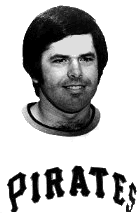
Tuesday, February 22, 2005
By Ed Bouchette, Pittsburgh Post-Gazette
Jerome Bettis may be leaning toward returning to play for the Steelers next season, provided the sides can work out a new contract.
Steelers' free agents
The Steelers have exchanged proposals with Bettis' agent.
Bettis is contemplating whether he wants to retire. In the meantime, the Steelers would have to reduce his salary of $4.484 million by March 2 or possibly release him because they will be above the NFL's salary cap.
Lamont Smith, Bettis' agent, said last night that he hopes a contract could be worked and that the Steelers would not release Bettis.
"To release him would change the dynamics of this whole thing," Smith said.
If the Steelers and Bettis can reach a new contract agreement, Bettis is expected to play in 2005.
In another matter, the Steelers likely won't protect Plaxico Burress from becoming a free agent when the deadline rolls around to designate their "franchise" player at 4 p.m. today.
The Steelers will have to release some players before March 2 to comply with the NFL salary cap that goes into effect starting that day.
Each team's salary cap should rise to around $85 million for 2005, up from $80.582 million last year, when the new figure is calculated soon. Despite the increase, the Steelers would be over the cap unless they cut salaries or players in the next week.
At least two veterans affected by this are cornerback Chad Scott and Bettis. Both could be released before March 2, although in Bettis' case it might not be final. Today is the first day veterans can be released.
Bettis currently counts $5.484 million against their cap, which includes $1 million from a prorated signing bonus. The Steelers could release him next week and then sign him to a new contract later, if he decides to play again. Last season, he took a pay cut of nearly $2.7 million to play for $1 million, but he did so before the March 2 deadline.
The Steelers would prefer to have a new contract with Bettis in place before March 2 even if he later decides to retire.
Bettis said in Jacksonville, Fla., the week of the Super Bowl that he wanted to return to Pittsburgh and speak with coach Bill Cowher before he makes his decision about retirement in "three or four weeks." He has not yet done that. Cowher and his staff will leave this week for the NFL scouting combine, which runs from Thursday through next Tuesday in Indianapolis.
Scott is scheduled to earn a salary of $3,885,000 in 2005 and count a little move than $4 million against the team's cap. He is signed through 2006. Mason Ashe, Scott's agent, said yesterday the Steelers have not informed him of any plans they might have for Scott, whether it would be to release him or ask him to take a pay cut. Ashe noted they did not inform him before they released another of his clients, linebacker Levon Kirkland, early in 2001.
Kevin Colbert, the Steelers' director of football operations, declined comment yesterday on any aspects of free agency. Colbert and his scouts also will leave for the NFL scouting combine today.
The Steelers have the option to put the franchise player tag on Burress today, but that would cost them $7,768,000 in a one-year deal. That represents the average of the top five salaries of wide receivers in the league. Unless the Steelers work some financial magic over the next week, that would not fit under their cap.
Each team can freeze one potential free agent by making him a franchise player. The Steelers have used the tag judiciously in the past, on tight end Eric Green in 1994 and linebacker Jason Gildon in 2002. Gildon eventually signed a long-term contract and did not play under the one-year franchise deal. The Steelers released him in June 2004.
The Steelers were $80,000 under the salary cap in the first half of last season before they reworked some contracts to free up $500,000.
They long have known they would be over the cap for 2005 and would have to release players or rework contracts. But their cap was further reduced because more players earned more incentives in 2004 than expected and that will count against their 2005 cap. Those so-called "unlikely to be earned" incentives from 2004 will reduce their salary cap by about $5 million more than they had once thought.
Their salary cap situation also should prevent them from pursuing many free agents this year.
Click here for more National Football League news.
(Ed Bouchette can be reached at ebouchette@post-gazette.com or 412-263-3878.)




